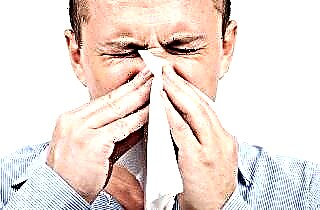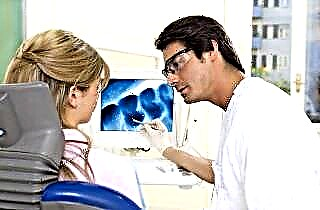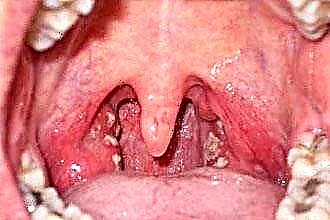What is sinusitis and how is it treated? We are talking about inflammation of one or more paranasal sinuses, which is caused by viral, fungal, allergic and some other pathogens. Sinusitis can act as an independent ailment or be a complication of influenza, rhinitis, colds, measles and other infectious diseases.
The treatment regimen involves the use of medication, physiotherapy, and, in especially advanced cases, surgical methods. Self-medication is strictly prohibited. This can further worsen the clinical picture and lead to severe intracranial and orbital complications (including death).
How adult sinusitis develops
 If an infection becomes the cause of the inflammatory process of the paranasal sinuses, severe swelling of the mucous membrane appears. There is an active production of mucus. The anastomosis, which connects the nasal cavity and sinuses, is significantly narrowed. Natural ventilation and drainage (cleansing) of the sinuses is impaired. As a result, mucus accumulates within the paranasal sinuses, thickens and becomes an ideal breeding ground for pathogenic microflora.
If an infection becomes the cause of the inflammatory process of the paranasal sinuses, severe swelling of the mucous membrane appears. There is an active production of mucus. The anastomosis, which connects the nasal cavity and sinuses, is significantly narrowed. Natural ventilation and drainage (cleansing) of the sinuses is impaired. As a result, mucus accumulates within the paranasal sinuses, thickens and becomes an ideal breeding ground for pathogenic microflora.
At the first stages of the development of the disease, nasal discharge is serous in nature. But then they quickly turn into muco-serous. If sinusitis is not treated in adults, bacterial pathogens enter the mucus. As a result, the permeability of the capillary walls decreases, and extensive purulent foci with an increased content of leukocytes and detritus appear.
It is recommended to get rid of sinusitis immediately, until the acute form has transformed into a chronic one. The latter, by the way, is very difficult to treat.
Procrastination with therapy contributes to the emergence of dangerous consequences or the risk of relapse. The duration of acute sinusitis does not exceed two months.
The root causes of the disease
In most clinical cases (about 50 percent), this ailment is caused by Pfeifer's bacillus and pneumococci. Slightly less often, inflammation is provoked by hemolytic streptococcus, moraxella and other bacterial, viral and fungal agents. The main causes of sinusitis are as follows:
- Congenital anomalies in the structure of the nasal cavity, as well as the ethmoid labyrinth.
- Acquired defects such as deviated septum. Such pathological changes can occur as a result of an incorrectly performed operation or mechanical injury. Often they appear due to hypertrophic rhinitis.
- Quite often, sinusitis is a consequence of not completely cured infectious diseases, including pathologies of the oral cavity (caries, pulpitis, and so on).
 In addition, one of the possible reasons can be called such medical manipulations as nasal tamponade, nasotracheal intubation, and so on.
In addition, one of the possible reasons can be called such medical manipulations as nasal tamponade, nasotracheal intubation, and so on.- The appearance of adenoids, polyps and other pathological neoplasms in the oral and nasal cavity.
- Sinusitis often occurs against a background of weakened immunity. This is due to bad habits - smoking or alcohol abuse.
- In some cases, inflammatory processes in the paranasal sinuses appear as a result of improper or poor-quality tooth extraction.
- Mycotic (fungal) infections are another possible cause of the disease. For the most part, this is the result of unreasonable intake of antibiotics, after which immunity is noticeably reduced.
- Clothes out of season and, as a result, frequent hypothermia of the body.
- Frequent contact of the nasal mucosa with harmful chemical compounds (professional factor, unfavorable environmental conditions, and so on).
Types and forms
Sinusitis, the treatment of which always begins with an accurate diagnosis, can be divided into 4 main types. In this case, the classification is based on the localization of the inflammatory process.
- The first type is sinusitis. Pathological changes occur within the maxillary sinuses, which are located on the sides of the nasal wings. Sinusitis occurs most often, which is easily explained by the low location of the sinuses and difficulty in passing mucus.
- The most dangerous and insidious type of sinusitis can be called frontal sinusitis. Inflammation of the frontal sinuses, in the absence of adequate therapy, can have far-reaching negative consequences in the form of decreased hearing and visual acuity, complete loss of smell and a number of complications. Frontitis is dangerous because the frontal sinuses are located very close to such vital organs as the ears and eyes.
- With ethmoiditis, the inflammatory process is concentrated in the cells of the ethmoid labyrinth. For this reason, the painful sensation is concentrated in the area of the bridge of the nose. Often this type of sinusitis is complicated by sinusitis.
- Sphenoiditis is the least common. In this case, the inflammation begins in the sphenoid sinus, which is located slightly deeper than the ethmoid bone.
 To quickly and safely get rid of sinusitis, it is necessary to accurately determine its form - acute or chronic. In the acute form, clinical symptoms appear quickly and quite clearly. The body temperature rises instantly, and severe headaches occur. Nasal congestion prevents the patient from breathing normally. There is a clear nasal discharge, which very quickly transforms into purulent.
To quickly and safely get rid of sinusitis, it is necessary to accurately determine its form - acute or chronic. In the acute form, clinical symptoms appear quickly and quite clearly. The body temperature rises instantly, and severe headaches occur. Nasal congestion prevents the patient from breathing normally. There is a clear nasal discharge, which very quickly transforms into purulent.
In addition, on the face of the affected sinus, pain is clearly visible on palpation (feeling). The patient may be disturbed by bouts of dry cough that worsen at night. After sleep, swelling of the soft facial tissues is often noticeable. The acuity of smell is reduced, and in some cases the patient may not distinguish between smells at all.
As for the chronic form of sinusitis, in this case, the symptoms are similar. However, the manifestations will be blurry and dim. Symptoms manifest themselves during an exacerbation, and during the period of remission they fade or disappear completely.
The main reasons for the transition of an acute form to a chronic one are long ignorance of the problem, lack of treatment, frequent contact with allergens.
Therapy
If you want to know how to cure sinusitis, you need to determine the priority areas of therapy. The key tasks are the following.
 Complete destruction of pathogenic microflora in the paranasal sinus and nasal cavity.
Complete destruction of pathogenic microflora in the paranasal sinus and nasal cavity.- The next step is to get rid of provoking factors as soon as possible. These include acquired or congenital anomalies in the structure of the nasal structures.
- Then comes the stage of relief of especially striking symptoms and manifestations. To restore the correct functioning of the sinus, it is necessary to ensure its normal aeration and natural drainage.
- At the final stages of the treatment of sinusitis, all efforts are aimed at preventing complications and transformation of the acute form into a chronic one.
How to quickly cure sinusitis? For this, we do not recommend delaying the visit to a doctor. In the initial stage, treatment in adults can be done with medication. To get rid of the symptoms of the disease and eliminate the causative agent of the disease, the following drugs are used:
- Antipyretic drugs - "Nurofen", "Paracetamol" and some others will help to lower the body temperature to optimal values.
- For the treatment of allergic sinusitis, one cannot do without antihistamines - Claritin, Tavegil, and so on.
- Aerosols for vasoconstriction will help to quickly eliminate the swelling of the nasal cavity and organize the passage of mucus (but do not forget that their excessive use leads to addiction, as well as excessive dryness of the mucous membrane).
- Bacterial sinusitis, which should be treated under the supervision of a physician, is treated with antibiotics.
- Furoat, Beclomethasone, Triamcinolone and some other nasal sprays will help reduce the intensity of the common cold in children.
Antibiotics
How to treat bacterial sinusitis at home? For these purposes, antibiotic therapy is prescribed. Immediately, we note that the optimal type and group of antibiotics is selected only by the attending physician. Doing this yourself is not recommended. Otherwise, you can further worsen the clinical picture.
 The use of antibiotics is justified if it is clearly established that sinusitis is of bacterial origin. In addition, such medications are indicated in case of detection of purulent exudate (mucus).
The use of antibiotics is justified if it is clearly established that sinusitis is of bacterial origin. In addition, such medications are indicated in case of detection of purulent exudate (mucus).
Pus foci are ideal places for active reproduction of pathological microflora. To stop this process, the use of antibacterial agents is justified.
If a mild form of sinusitis is diagnosed, preference is given to antibiotics from the macrolide group, as well as cephalosporins. In especially severe cases, drugs from the penicillin group (second or third generation) are used. Prolonged chronic forms of the disease are treated with protected penicillins.
Acute and chronic inflammation of the sinuses, the treatment of which is justified with antibiotics, can be eliminated with a three-day course of "Azithromycin". This option is best for children and is gentle. Antibacterial agents of local action, for example, "Bioparox", are often in demand.
Physiotherapy procedures and puncture (puncture)
The following are effective therapeutic methods:
- rinsing the nose with sinusitis by the "cuckoo" method;
- puncture of the nasal sinus, followed by its cleaning of pus;
- laser sinusitis treatment;
- electrophoresis;
- UHF of the affected sinus;
- inhalations based on herbal decoctions;
- phonophoresis and so on.
To get rid of sinusitis in the later stages, it is not enough to rinse the nasal cavity with antiseptic solutions. The doctor prescribes a puncture (puncture) of the inflamed paranasal sinus wall. How does this happen?

With the help of a special instrument, penetration into the sinus cavity is carried out through the soft cartilaginous tissue. Next, a catheter (a small hollow tube) is inserted into the resulting hole, through which a disinfectant solution is supplied under a certain pressure. It disinfects the sinus cavity and removes the accumulated pathological contents. In some cases, the procedure is repeated several times, which helps to exclude a relapse.
Preventive actions
Now we know how to get rid of sinusitis. But it is always easier to prevent any disease than to treat it for a long time and persistently, so let's pay attention to prevention. An incompletely cured runny nose, flu, colds and other ailments cause the appearance of various types of sinusitis.
Therefore, the most important task in the prevention process is to treat them correctly. Believe me, it is better to spend time and cure a runny nose than then fight for weeks with acute or chronic sinusitis.
Don't forget these helpful tips:
- Make it a rule to have regular check-ups at the dental clinic. Pulpitis, stomatitis and caries - such infectious diseases often trigger the mechanism of inflammation of the paranasal sinuses.
 We remind you again - you should not engage in self-diagnosis and treatment. Incorrect or unjustified intake of medications leads to sad consequences. The temperature has risen, the runny nose does not go away for a long time? See your doctor.
We remind you again - you should not engage in self-diagnosis and treatment. Incorrect or unjustified intake of medications leads to sad consequences. The temperature has risen, the runny nose does not go away for a long time? See your doctor.- Work to strengthen your protective functions. In some cases, with high immunity, the body is able to independently cope with bacterial agents without the use of strong antibacterial agents.
- Eat right - introduce foods high in vitamins and micronutrients into your diet. Give up semi-finished products, give preference to natural food.
A healthy lifestyle, regular physical activity and proper nutrition are what can completely replace pills and sprays. Sinusitis develops more readily in a weakened body. Follow the tips above, live happily ever after!

 In addition, one of the possible reasons can be called such medical manipulations as nasal tamponade, nasotracheal intubation, and so on.
In addition, one of the possible reasons can be called such medical manipulations as nasal tamponade, nasotracheal intubation, and so on. Complete destruction of pathogenic microflora in the paranasal sinus and nasal cavity.
Complete destruction of pathogenic microflora in the paranasal sinus and nasal cavity. We remind you again - you should not engage in self-diagnosis and treatment. Incorrect or unjustified intake of medications leads to sad consequences. The temperature has risen, the runny nose does not go away for a long time? See your doctor.
We remind you again - you should not engage in self-diagnosis and treatment. Incorrect or unjustified intake of medications leads to sad consequences. The temperature has risen, the runny nose does not go away for a long time? See your doctor.

